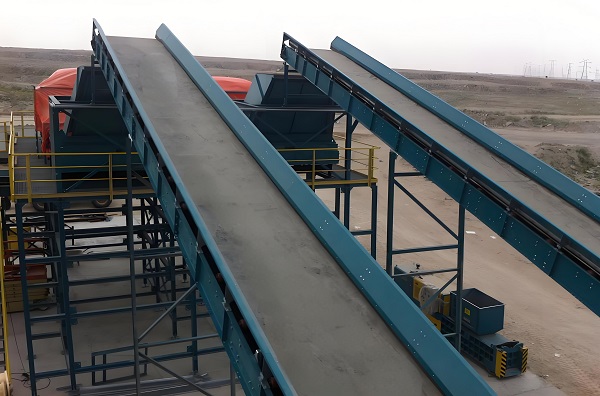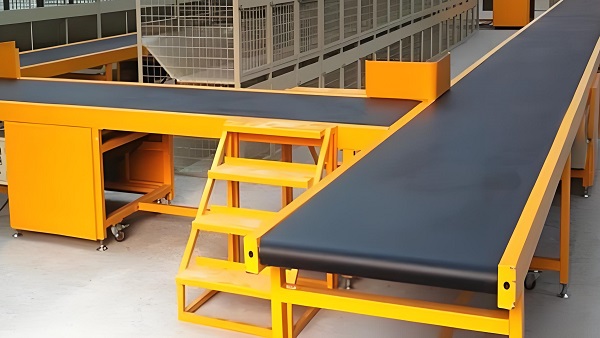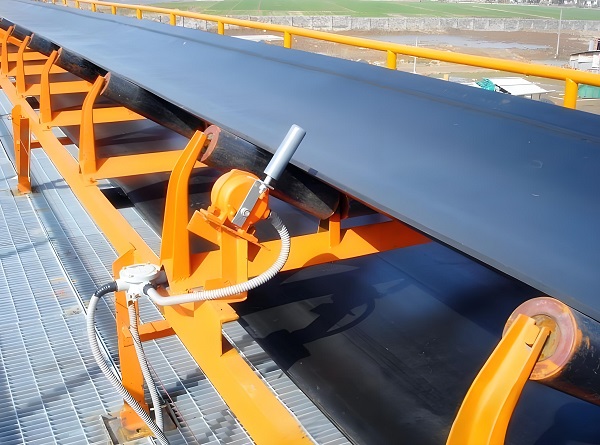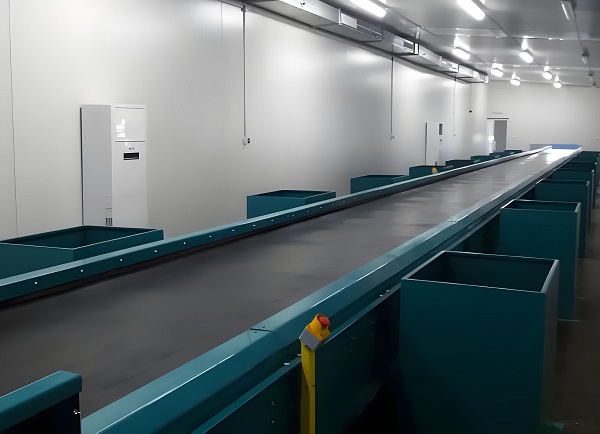Belt conveyors are core equipment for material transportation in industrial production, and their stable operation directly impacts production efficiency. Proper maintenance and routine upkeep can effectively extend equipment life, reduce downtime, and generate greater profits for the company.
1. Common Faults and Repair Methods
Belt conveyors are bound to experience various faults over the long term, and timely and accurate maintenance is crucial to ensuring their normal operation.

a. Belt misalignment is one of the most common faults. When a belt misaligns, first check that the idlers are installed straight. If the idler axis is not perpendicular to the belt centerline, adjust the idler brackets to align the idler axis with the belt centerline. Next, check that the rollers are parallel. Unparallel rollers can cause uneven force on both sides of the belt. This can be corrected by adjusting the roller bearing seats. Improper material loading can also cause misalignment. Ensure that the material lands evenly on the center of the belt. If necessary, install guide plates to correct the loading position.
Belt slippage is also a common problem. Belt slippage is often caused by insufficient friction or excessive load. If the belt tension is insufficient, adjust the tensioning device, such as a spiral tensioner or a weight, to increase the belt tension and friction. If the drive roller surface is severely worn and friction is reduced, repair the roller surface or replace it. When conveying excessive material, exceeding the equipment load, reduce the material flow rate to prevent belt slippage.
b. Belt tears are a serious fault and can cause significant economic losses. Upon discovery of a belt tear, immediately stop the machine and investigate the cause and extent of the tear. If the tear is caused by a sharp foreign object in the conveyor, remove the foreign object promptly and repair the torn area. For minor tears, cold-glue a patch with a special adhesive. For larger tears, hot vulcanize the patch or replace the belt. Also, inspect the conveyor's cleaning and protective devices to prevent recurrence.
Puller failures should not be ignored. Damaged roller bearings can cause the roller to rotate sluggishly, produce unusual noises, and generate heat. In this case, disassemble the roller, replace the damaged bearing, and clean and lubricate the roller shaft. If the roller surface is worn or corroded, a surface surfacing or spray coating can be performed to restore the roller to normal working condition.
2. Key Points for Daily Maintenance

a. Daily maintenance is an important measure to prevent belt conveyor failures and requires meticulous attention to multiple aspects.
Regular equipment cleaning is the foundation of daily maintenance. At the end of each day, remove any remaining material from the belt surface to prevent accumulation, which can affect normal operation and service life. Also, clean components such as rollers and drums to prevent dust and debris from adhering to these components and increasing wear.
Lubrication and maintenance are crucial for the proper operation of belt conveyors. Rotating components such as roller bearings and drum bearings should be lubricated regularly. Use appropriate lubricating oil or grease, and refill according to the specified lubrication cycle and quantity. Proper lubrication reduces friction and wear on components, lowers equipment operating resistance, and improves equipment efficiency and service life.
Belt inspection and maintenance are key points of daily maintenance. Regularly check the belt tension to ensure it is properly tensioned. Excessive looseness or tightness can affect the belt's service life and conveying efficiency. Inspect the belt surface for signs of damage, cracks, or aging, and address any issues promptly. Also, check the belt joints for tightness. If any joints are loose or cracked, re-glue or rivet them immediately.
Roller inspection and maintenance are also crucial. Regularly check the roller rotation. Replace any rollers that are sluggish or stuck. Check the roller seals to prevent dust and moisture from entering and damaging the bearings. Severely worn rollers should also be replaced promptly to ensure smooth belt operation.
Routine maintenance of the electrical system is equally important. Regularly inspect the operating conditions of electrical equipment such as motors and reducers, observing for any abnormal noises or heat. Check electrical wiring connections for tightness, looseness, or aging. Ensure the electrical control system is sensitive and reliable to avoid equipment downtime due to electrical failures.
b. Establish a comprehensive maintenance system
Establishing a comprehensive belt conveyor maintenance system is crucial for ensuring the orderly execution of maintenance work.
Develop a detailed maintenance plan that clearly defines the maintenance cycle, content, and responsible personnel. Based on the equipment's operating conditions and operating environment, rationally determine maintenance cycles, such as daily, weekly, monthly, and annual maintenance. The maintenance plan should detail the maintenance tasks required for each cycle, including cleaning, lubrication, inspection, adjustment, and replacement. Clearly identify individuals responsible for each task to ensure effective implementation.

c. Strengthen training for maintenance personnel to enhance their professional competence and operational skills. Maintenance personnel should be familiar with the structure, operating principles, and maintenance requirements of belt conveyors, and master the diagnosis and treatment methods for common faults. Regular training and learning should be organized for maintenance personnel to continuously update their knowledge and skills, improving the quality and efficiency of maintenance work.
d. Establish equipment maintenance records to record equipment maintenance and operating conditions. These records should include detailed information such as the time, content, problems discovered, and solutions for each maintenance visit, providing a basis for equipment maintenance and management. Analysis of maintenance records can help understand equipment operating patterns and fault trends, enabling timely preventive measures to reduce the likelihood of failures. e. Strengthen supervision and inspection to ensure the effective implementation of the maintenance system. Establish a dedicated supervision and inspection team to regularly inspect and evaluate maintenance work, and promptly urge rectification of any identified issues. Reward those who demonstrate outstanding maintenance performance and conscientiousness, and penalize those who violate maintenance regulations and cause equipment failures, thereby establishing a sound incentive and constraint mechanism.

Belt conveyor maintenance and routine maintenance is a systematic project that requires the company to prioritize and implement effective measures to ensure troubleshooting, routine maintenance, and system development. This ensures stable equipment operation, improves production efficiency, and provides a strong foundation for the company's development.